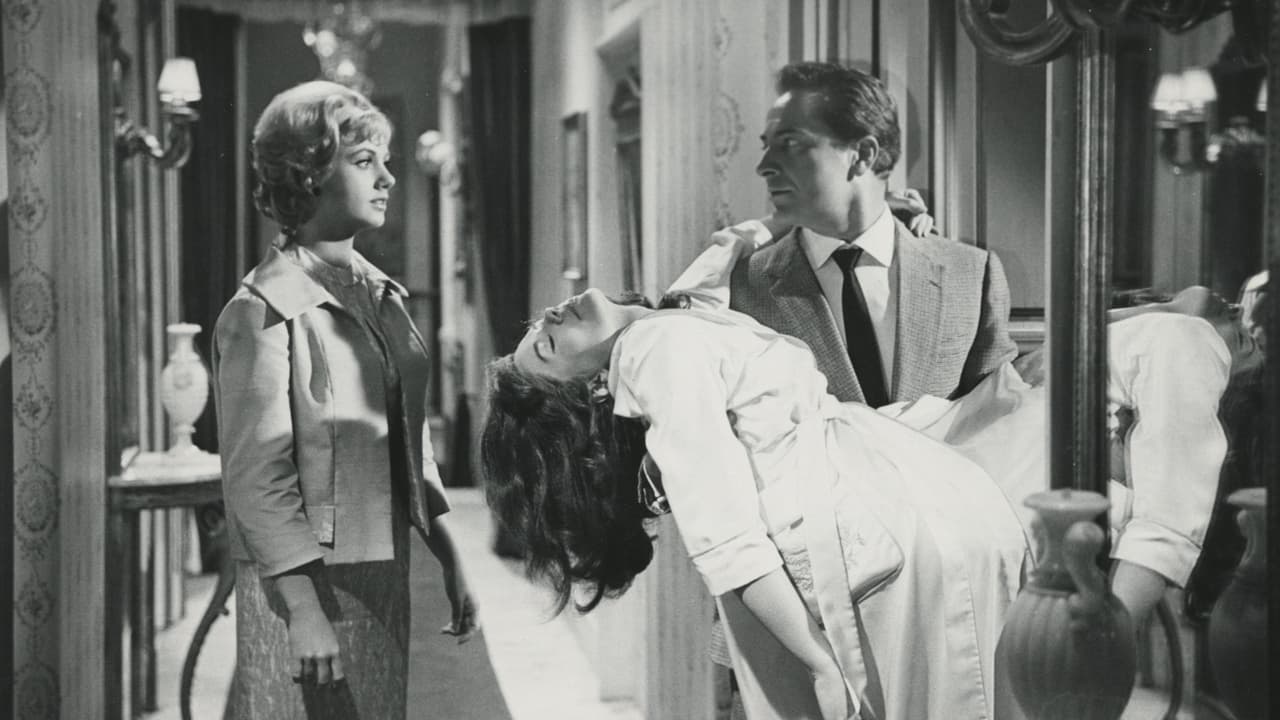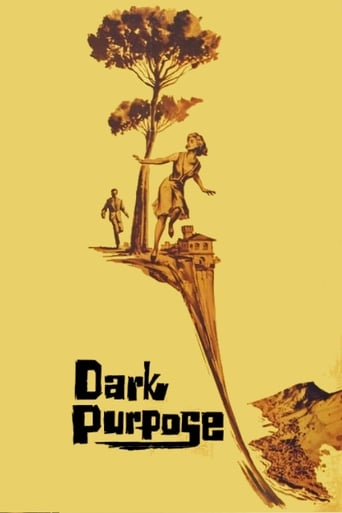

This is one of those Gialli that doesn't have a masked killer slaughtering the cast, but still has plenty of the other elements still intact. It's similar to later films like The Designated Victim and Umberto Lenzi's Oasis of Fear as we're introduced to a limited amount of characters, and are left to figure stuff out as we know for sure something sinister is going on.Even though this is a mid-sixties Italian film the setting is not an old castle in Scotland or wherever, but an old mansion on the Amalfi Coast! An English archivist and his young assistant arrive at the mansion of Count Paolo Barbarelli to archive his stuff (I guess). Next you know Paolo is giving Karen the assistant the glad eye and making his guard dog eat her shoes so he can buy her a new pair.Karen wonders who the young lady wandering around the mansion is and Paolo explains that this is just his mentally ill daughter Cora, whom the archivist starts calling 'Lady MacBeth' (he's quite funny this guy). Next up Paolo dumps his more mature mistress and starts putting the moves on Karen. If she thinks that being a stepmother to a girl on meds is going to be tough, she's underestimating the circumstances.I won't go much further with the plot but the whole film starts out like a romantic comedy, starts developing a bit of mystery, and by the last third is wearing it's giallo influence on it's sleeve, what with the pictures that hold clues and the twists and possibly even murder maybe. It's one of those films that gets better as it goes on, so if you stick around a bit it might pay off for you.Or not. How am I supposed to know? Jesus.
... View MoreHow do I dislike thee, Dark Purpose? Let me count the ways. Start with the horrible print utilized by TCM for the film's recent airing. It's horribly pan and scanned, with scratches and splotches throughout, and really ugly faded colour that looks more like Eastmancolor than Technicolor. Move on to the wretched sound recording, with the dialogue seemingly recorded by having the cast post-synch their lines whilst enclosed within a burlap sack. Then there's the deeply disappointing music from normally reliable composer Angelo Francesco Lavagnino, a florid and overly dramatic score that does the thin and unoriginal plot line no favours. I'd also love to know exactly how co-directors George Marshall and Vittorio Sala collaborated on this film: Dark Purpose displays absolutely nothing in the way of artistry; surprising considering Marshall was a Hollywood pro and that Sala's next film was the far superior Spy In Your Eye (1965). Of course it's cause for celebration when obscure films like this pop up on TCM--more, please!--but sometimes they're obscure for a reason. At least George Sanders is good.
... View MoreJust a few words about the print shown on TCM. It begins with a credits over action sequence where three of the leading actors are being driven around the Amalfi coast, with a bowler hatted George Sanders half out of the Fiat 1500 (1600?) sports car. The print was obviously several generations away from the camera negative. It sported a Columbia logo but according to this site it was distributed by Universal. The opening credit sequence is squeezed as if it had been filmed with an anamorphic lens and copied using a normal spherical lens, a typical strategy in panned and scanned wide screen prints copied for showing on TV and for the commercial videos of recent memory. Columbia may have bought the distribution rights either for TV or video or both. After the credits the opening frame is of the sign identifying the Salerno train station with half of the "S" and none of the "O" in the frame. The train arrives and George Sanders and Shirley Jones get off and have a deliberately unintelligible conversation drowned out by background noise. This may be because Italian films are shot silent with the dialog recorded later and this meant that the complicated and expensive mixing of such a scene could be more cheaply "faked". Then they are met by a woman and taken to the Fiat sports car and the opening theme music begins and then abruptly ends in a jump cut of the Fiat pulling up to the front door of a Villa. Obviously the opening has been rearranged as the arrival at the train station was supposed to be a pre-credit sequence and probably was in the theatrical feature but the mimed conversation was judged to be too off-putting as a opening and things were just rearranged. I.E. The picture starts with the arrival in Salerno and proceeds to a picturesque road trip along the Amalfi coast complete with credits and theme music (60s faux Parisan vocalese) and then the story begins.There is no widescreen process, anamorphic or not, listed in the credits so the big question is - was the film re-edited for the after-market, or for American theatrical distribution or maybe it was cheaper to print the original film in 1:33 from a 'scope camera original? What ever, the current print isn't even panned and scanned but just seemingly run through the printer at full speed. The film is in Technacolor which suggests the possibility of their house process Techniscope. This was a recently introduced widescreen process which uses spherical lenses to record two wide frames inside a usual 35mm frame but is printed anamorphic by being blown up 2X. This would explain the fuzzy focus and crude depth of field of the TCM print.This is a petty terrible film, call it at its best -"derivative". Another snoor fest of the innocent American girl falling for a dubious but charming and handsome Italian nobleman, complete with secret door and hidden room containing "the truth". The star attraction, except for maybe a nearly extinct cult following for the laconic and sardonic George Sanders, is non-existent. There is nothing remarkable about this film either aesthetically, cinematically, or historically. This makes DARK PURPOSE a very bad candidate for restoration. I fear the copy shown on TCM is about all anyone will see of L'INTRIGO or DARK PURPOSE so if you must see it or copy it then take advantage the next time its on TCM. It truly is an orphan film.
... View MoreIn this American-abroad-in-peril the quite breathtakingly beautiful Shirley Jones plays a young secretary who arrives in Italy with Britton insurance agent George Sanders (noless!) to evaluate the stunning estate of Count Paolo Barbarelli (played with merit but without real imagination by Rossano Brazzi). She soon finds herself more interested in the clichéd aristocrat charms of the Count than in his art collection. However all is not as it seems, and sneaking around the house is the Counts eerie daughter, allegedly traumatized after the death of her mother in an accident a few years back. Questions mount and plot thickens as Shirley pursues a friendship with the girl, and roams around the big estate where a mystery seems hidden within the architecture it self. All in all this is an entertaining romp for those with a taste for stylish Hitchcockian thrillers of the 60's, and what it lacks in originality it makes up for in the charm of the cast, good paced direction and lavish imagery.
... View More